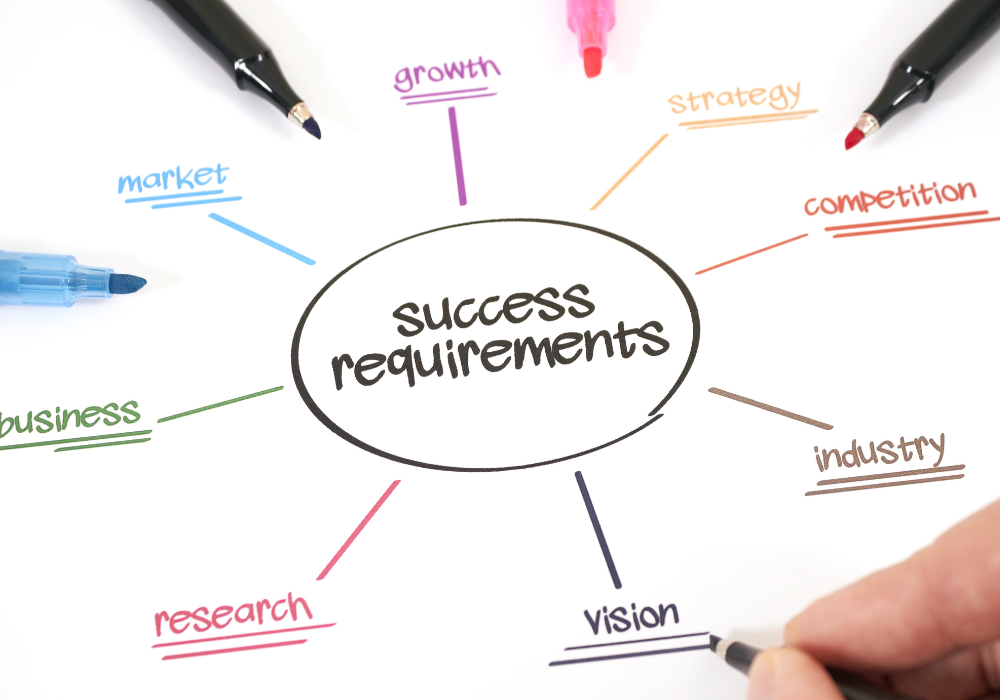As this is an in-depth guide it is pretty lengthy, so here's a table of contents to help you navigate it.
Table of Contents
3. Four Types of CTA to increase your conversions
6. Conclusion
CTAs, or calls to action, are a fundamental tool in the digital marketing toolkit. A good CTA can be the difference between a window shopper and a customer, between an impression and a conversion.
In order for any of your digital leads to have gotten to lead status, there’s one thing they will all have in common. They would have taken an action, either on your landing page, website, blog or ad in order to have gotten to the point they have turned from visitor to lead.
The trick is giving them a clear path to follow, in order to make that first step.
No matter how great your design and visuals are, if your CTAs are weak, unclear or overcomplicated (or even missing entirely) – you won’t get those conversions.
The first ever banner ad saw great success with a ‘have you ever clicked here’ message without any clues as to what ‘here’ could lead you to. Unfortunately, times have moved on, and that simply isn’t going to be a successful CTA anymore. And the problem with the CTAs we see now, is a lot of them simply don’t work.

Now, a clear CTA is a prompt to get your audience to do something specific - it should make it easy for them to do what you want them to do, and it should tell your readers why to do something, not just to do it. There are tonnes of different CTAs you can use, depending on your purposes - ranging from lead generation, event promotion, lead nurturing and form submission to social sharing and closing deals.
This in-depth guide will talk you through the dos and don’ts of CTAs, highlighting some common places people tend to trip up, plus 4 CTAs we love that can increase your conversions, how you can target your calls-to-action, and finally some examples of CTA actions you can get your audience to take, from brands you’re familiar with.
And while we’ll be mostly using examples on websites, don’t forget to use CTAs in your emails and your ads, too. Not all CTAs will work in email rather than on a page, but if you want your email marketing to generate traffic and leads, you’ll need to use CTAs to convert a reader into someone who does something next.
1. Dos and Don’ts of CTAs
Don’t confuse meaning
It can be tempting to use multiple CTAs when you want people to take more than one action. But this can cause your readers confusion – you should use a primary CTA with one secondary CTA only if necessary. If you over saturate your page with calls-to-action, your message loses value and nothing will stand out.
Don’t use ‘Submit’ as your button text
Submit is boring. No one is drawn to the word ‘submit’. Instead, use valuable and actionable copy. Examples of these are ‘Download Now’, ‘Speak to an Expert’, ‘Get Started’, ‘Start Your Journey’, ‘Find Your Match’. Make your offer more specific and see your conversion rate increase.
Do make them look 3D
By adding depth to your CTAs by using drop shadows, bevels and hover effects, , they will look more clickable. If your CTAs look too flat, your readers may skim over them and miss them.
Less is more
When it comes to the copy, less is more. The button itself should have no more than 5 words and the overall text should be minimal - a good rule for designing your CTAs is to ask yourself if every word is essential? Would it work without certain bits of copy? And would it be as effective without those bits?
Don’t use passive language
Make sure the language in your CTA is compelling, tells your visitors what you want them to do, and makes them want to do it. Show them the value for them by taking the action. Use words that relate to the visitor – instead of “download a copy” try “download your copy”, or even “download my copy”.
Do keep them simple
Keep your calls-to-action clear and simple. They should be uncluttered – let’s bring it back to KISS (keep it simple stupid!). People won’t pay attention to something that demands a large amount of their attention, they want to quickly skim read it and click.
Do have a specific landing page
This is a pretty important one that can help see your conversion rates rise. By having a separate landing page that your call-to-action leads to, which restates your offer, your reader will know what you want them to do rather than get distracted by the rest of your homepage.
Do A/B test
Testing your CTA buttons is important, if not vital. Experiment with placement, colour, style and copy. Test, retest and test and again! It’s interesting to see what your readers prefer. Try to make one change at a time so you can pinpoint what made the difference in your click through rate.
Do use whitespace to make them stand out
Don’t cram your calls-to-action into cluttered spaces. White space helps to make CTAs stand out and look more attractive. They need to be visible to be effective.
2. Designing your CTAs
If you’re a graphic designer, you probably don’t need help with the actual creation of your CTAs. However, if you’re not a graphic designer, there are easy ways to still create CTAs that will both look good and convert!
Canva is a really simple design software you can use for free. It allows you to easily make attractive CTAs (among plenty of other things). You will easily be able to design CTAs that fit with your company branding, and you won’t need graphic design experience to make them look professional, polished and on brand.
Canva has a range of templates available that may be useful for your website. You can switch the fonts, colours, and images in the templates, so find a style you like and start customising.
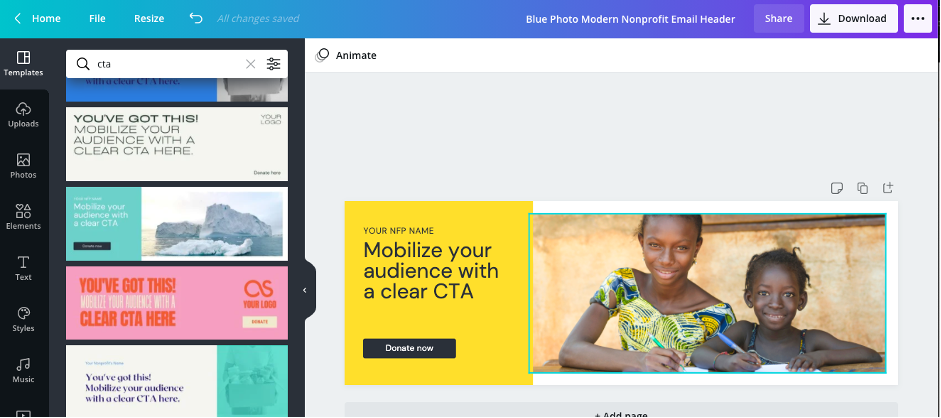
HubSpot also has a CTA starter pack, which has a tonne of customisable templates you can use for free. Plus you can always take inspiration from CTAs you’ve seen elsewhere – don’t copy them, but do look at what appeals to you about them.
When designing your CTA, it’s important you use a colour that will stand out from where it’s going to be displayed. A high contrast button will likely see higher conversion rates.
Think about visual appeal – use striking imagery, colours, and fonts that (while on brand) will catch the reader’s eye. You only have a couple of seconds to make an impact before they move on, so what can you do to grab their attention?
3. Four types of CTA to increase your conversions
There are tonnes of different types of calls-to-action you can use - here are 4 of our favourites that will increase your conversions.
No-risk CTAs
When your audience is assessing whether or not to follow your CTA, one element they will consider is the risk associated with it. That could be a risk to their time, their data, or their finances.
The typical buyer journey usually starts at awareness, then moves to the consideration stage before going on to the decision stage. Marketing isn’t about simply promoting what you’re offering, but about influencing their decision-making process in your favour. You need to convince your audience that they need or want what you’re offering.
Free trials are a very popular way to do this (relying on the fact your product or service is genuine enough that once they try it, they’ll be convinced). This is the definition of a low-risk CTA – it’s a free trial, after all. To take it from low risk to no risk, offer a trial without requiring a credit card to sign up. Taking away the risk of forgetting to cancel means you’re more likely to get those conversions in the first place. Then your product just needs to wow the user.
Your free trial needs to essentially blow your user’s mind, make them wonder how they’ve got so far without it, and make them realise the true value in what you’re offering.
You want them to not be able to imagine continuing on without your tool, product or service as they’ve realised how positively it has affected them. If your product can do this, you will experience great conversion rates from your free trial.
People love to try before they buy, or experience before they buy. Services like Spotify and Apple music have this down to a tee. They offer users a 3-month free trial which is a long enough time frame for you to have amounted a collection of music and playlists that you form an attachment to, which would be inconvenient to lose. The free trial ends and the thought of losing the time you’ve spent making playlists and saving music you like outweighs the impact the price of a monthly subscription has on you.
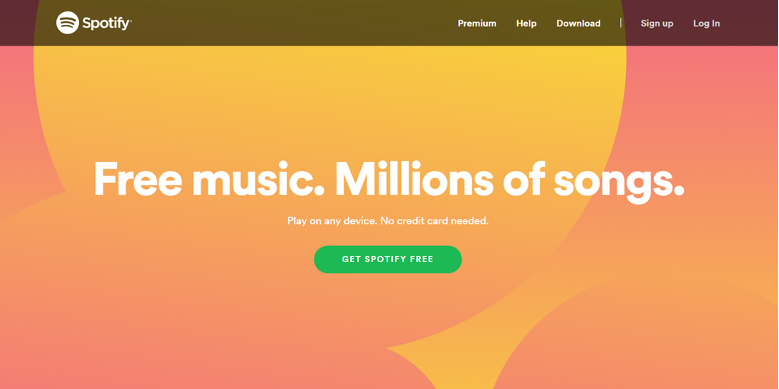
With no-risk CTAs it’s the same idea. They test it, realise they need it, then buy it.
With these kinds of CTAs emphasising the ‘no risk’ and if applicable ‘no credit card required’ can really increase your Click Through Rate (CTR). Some research indicates that highlighting ‘no credit card required’ can increase your CTR from anything from 2% to 10%.
No risk CTAs work in all contexts – websites, emails, ads, blog posts…
Persistent header CTA
Persistent header CTAs work like freezing your top row on Excel. No matter how far down, or up, the page your reader scrolls, the CTA remains fixed (and persistent!) and the top of the page.
The format is simple, in the shape of a bar that appears at the top of the page, and it has some great benefits. While it’s always on your page, it’s not as in your face or obtrusive as, for example, a pop-up CTA. As it’s not getting in their way, people are more likely to consider it. Which leads to the second strength - they are noticeable, mainly because they’re usually designed with a contrasting colour to the header of your page.
The placement of persistent header CTAs are strategic, and eye tracking studies have found that the top of the page is actually the most viewed part of a web page. So, your header CTA is in the Goldilocks spot of your page. As well as being in that sweet spot, they, as the name suggests, are persistent – you can’t get rid of them. Your persistent header CTA is always there, waiting for your reader to decide to convert, and when they make their decision, they know exactly where to click.

All this being said, there are a few drawbacks with this style of CTA. While they are noticeable, there is very little room for creativity when it comes to their design. There isn’t a whole heap of room for words or copy, and it can be difficult to make them pop, or stand out after repeated viewing. Using the right tools can allow you to switch them up as often as you like (funnily enough, we use HubSpot), and you can set different ones for different pages, so if you have multiple offers, you can make sure people see something that’s relevant to the page they’re viewing.
Exit-intent popup CTA
The decision-making process that occurs before a user either decides to, or not to, click on your CTA is lengthy. Right at the end of that potential lead disappearing into the anonymous abyss, is when they show exit intent.
An exit intent popup is for this situation exactly, to try capture leads that are about to slip through the cracks. These popups are displayed when your user is about to navigate away from your blog, landing page or website, and it’s going to try to convince them not to leave. You also have nothing to lose with one last attempt to get your users’ attention if they are intending to leave regardless. Worst case scenario is they leave, and that’s what they were going to do anyway.
As these types of CTAs are triggered the cursor, they don’t work so well on mobile, so if you know most of your traffic is mobile, they might not be a viable solution.
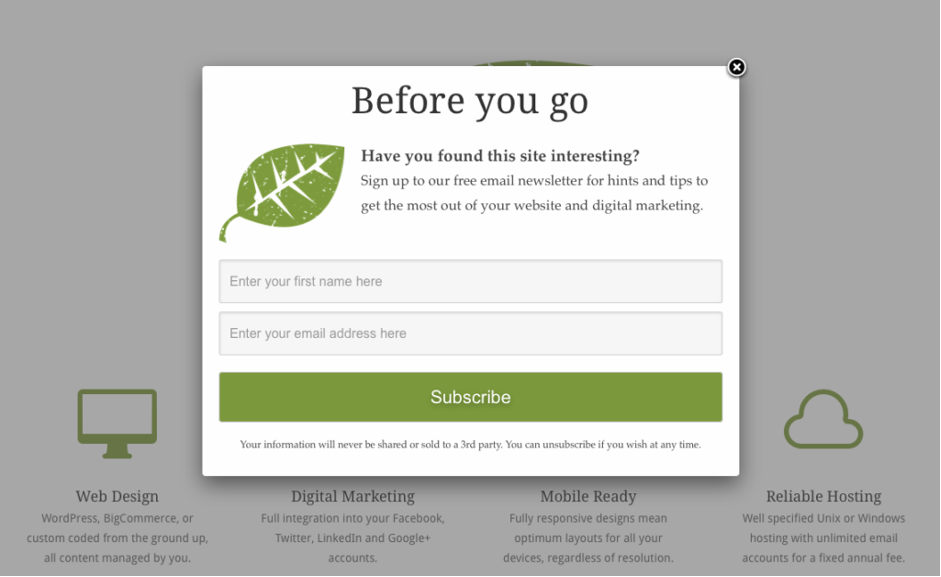
We know that marketers often think that people hate these CTAs, and don’t want to include them, but… Studies have shown that exit attempt popups can actually capture up to 35% of people that are about to leave a page, and this is obviously a huge percentage of leads that would have otherwise disappeared off your radar.
The trick is having a really good call to action. Don’t ask for too much – try to offer something of value instead. The goal here is for the CTA to catch the user’s eye and make them think, “Why not?” – so you need something that will appeal to them, rather than something that just begs them not to leave and offers nothing new.
Slide in CTAs
Another great way to help you capture leads, gain visibility and pull in some more conversions. As your reader scrolls down your page the slide in CTA will, funnily enough, ‘slide in’ to the reader’s screen. This can be anywhere you choose from halfway through the page, the end of an article or at the very bottom of your page.
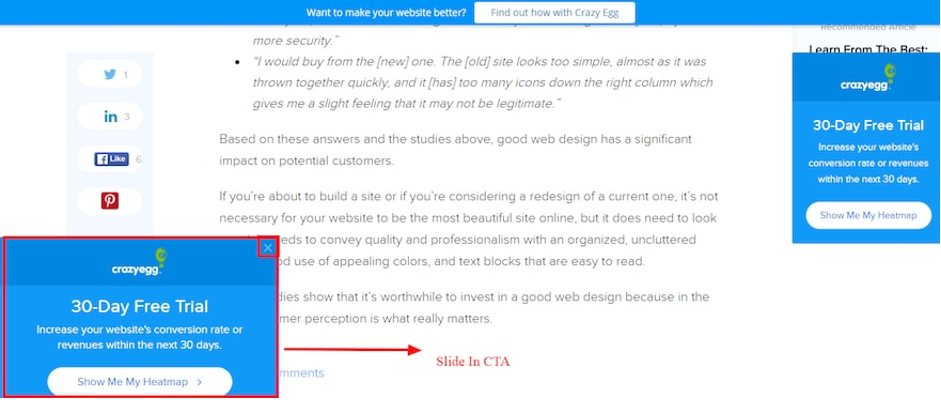
These CTAs have some strengths – they’re reasonably big so can be designed well and look good, the slide in CTA has great viewability. It’s also attention grabbing – the motion of it ‘sliding in’ makes it pretty difficult for your reader to ignore. The drawbacks can be some readers may find it irritating or annoying, and they can be more difficult to utilise and some website hosts may require programming skills to install.
4. Using the right targeting
Targeting is the perfect way to make sure your CTAs have the best chance of converting your audience. If you use email marketing, segment your database and give each segment a specific CTA that’s designed for their needs – you can segment based on most of the examples, below.
Website targeting can be a little more challenging if you don’t have the ability to use smart content based on user behaviour, but you can still select appropriate CTAs from context clues…
Persona targeting
Like across all areas of your marketing – targeting is likely to increase your conversion rates. This savvy-style of call-to-action usage can see you targeting your different personas. For examples, if you’re targeting a sales persona, she’s probably going to want to know more about a masterclass in video selling, rather than your guide to CTAs. We’d want our downloadable CTA guide to be a CTA for our marketing and digital personas.
Using this targeting relies on understanding your personas, and having CTAs (and content offers) designed to appeal to each of them. Then you need to look at which pages they’re likely to be looking at. So, our Sales pages would have a CTA to a sales-related offer, our IT pages will have an IT CTA, and a marketing page would have a CTA to a marketing offer. Simple, right?
Lifecycle targeting
Another method of targeting your CTAs is based on the lifecycle of your audience. If someone is visiting your website for the first time, they’re much less likely to purchase than someone who has already interacted with your website or downloaded content previously. It’s a good idea to present different offers to these different groups of people.
For this type of targeting, you can either look at the types of pages people are looking at – for example, people looking at pricing pages are likely to be closer to the decision stage, whereas blog posts are more useful in the consideration stage.
Alternatively, if you have a CRM linked to your website, you might be able to use smart content to target specific users in your database, based on their lifecycle stage.
Targeting on page visits
If the only page someone has visited on your website before is a blog post, it’s not likely they have much intention of buying, yet. If someone has been browsing your pricing plans and services, they’re more likely to be considering purchase. Think about CTAs that can entice those on your pricing or services pages further, such as discounts or free trials. Then use CTAs for downloadable content and resources on blog pages.
Targeting based on what people have already shown interest in
You know when Spotify recommends you a song, or Netflix a new series – well that’s based on what you listened to or watched before, so what you’re interested in. They may have a smart algorithm that does this, but it doesn’t mean we can’t apply the same logic.
You can show people CTAs based on the types of content people have viewed or downloaded from you in the past. If someone has downloaded your Beginner’s Guide to Inbound then you could give them to a CTA to download a 10-Minute Guide to Inbound next time they visit.
5. Examples of CTAs and actions you can get people to take
Your call to action can get people to take a range of ‘actions’. Whether you’re trying to get someone to sign up for your service or subscribe to your blog. It’s worth trying to use alternative phrasing like PointBlank used ‘Be Awesome!’ instead of a basic ‘sign-up’. This is clever, as sign-up CTAs can be notoriously tricky to convert on.
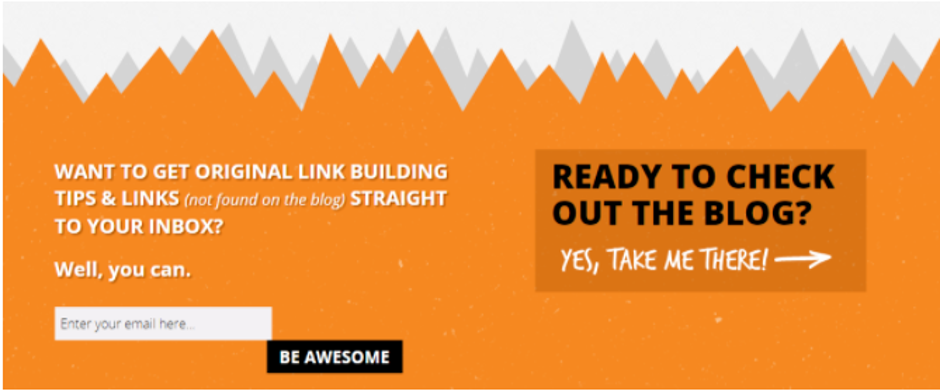
Trello remind you, when telling you to sign up, that it’s free. Removing the risk of the action and making it much more appealing.
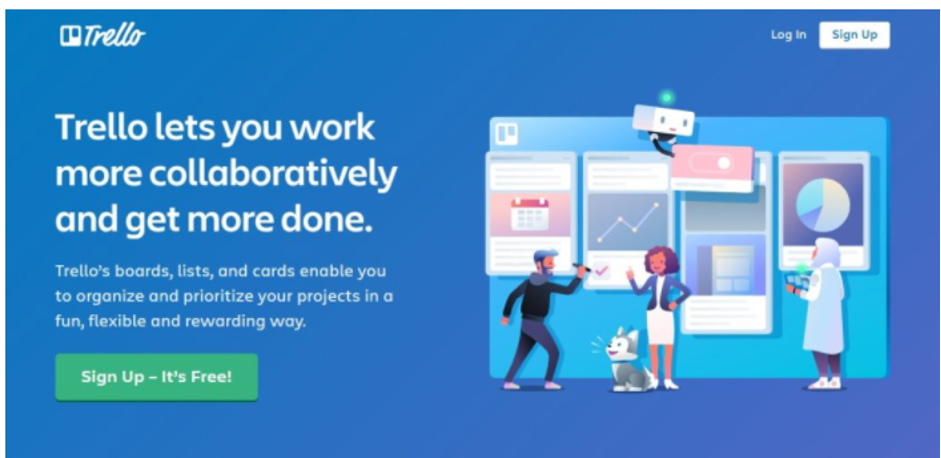
When using a ‘Try for free’ CTA it’s important to make both the value of what you’re offering clear, as well as minimising the risk to the reader – e.g., no credit card details required. If you’re offering something your reader is really going to want, you won’t need a particularly exciting, bold or dramatic CTA.
That being said you still want your call to action to resonate with your brand image and voice. Check out Netflix’s example…
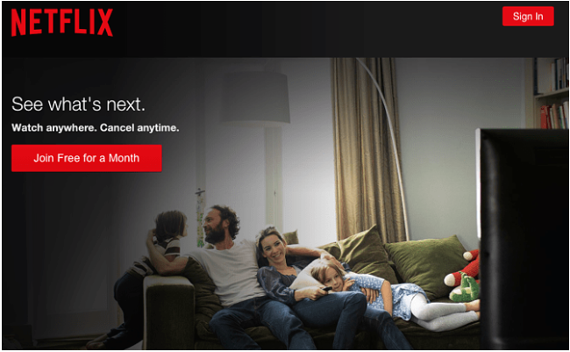
Houzz’s example of this Get Started CTA uses compelling language and piques curiosity – what is the new way to design your home? This is a great example of how you can use copy to intrigue your audience.

If you’re asking your reader to Learn More, you need to show them the value in why they should want to follow your action. Purple do it with the enticing offer of ‘try it for 100 nights’ – they need a bit more copy as a mattress is something that everyone has and uses every day, so they don’t need to convince you why you need a mattress, just convince you to try their mattress. Risk free. If you don’t like it, they’ll pick it up for free.
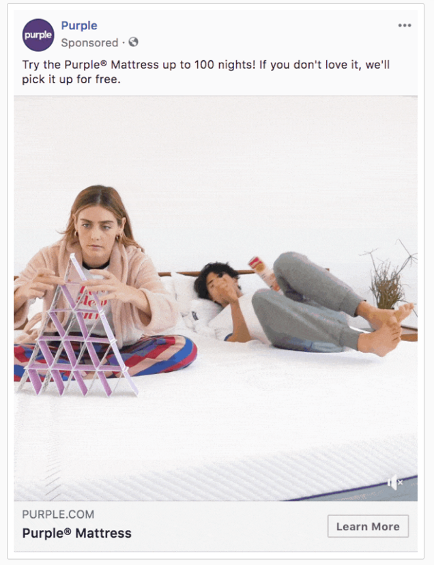
Airbnb grab the reader’s attention and compel them to learn more by offering the opportunity to earn more. Simple and easy.
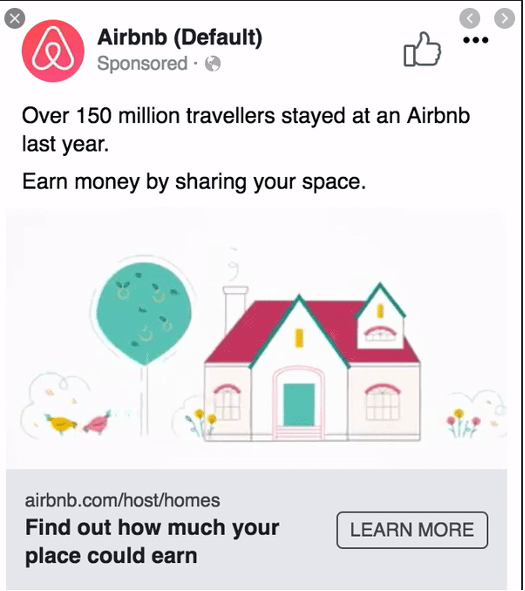
Conclusion
Fine-tuning your CTAs is going to make a huge difference in driving conversions on your website.
At the end of the day, your content marketing efforts are going to be pretty weak unless your CTAs compel the user to convert. The most common problem we see when people try to use compelling CTAs is that they become too intrusive, or too boring.
Start off with trying out no-risk CTAs on your website - these are proven as one of the best ways to get conversions. Then at the end of that free trial, deliver another compelling CTA to move that lead further through your sales funnel and drive more conversions towards one of your paid plans.
Your next step is to start working with persistent header CTAs. These can be a great way to really grow your email lists and work on almost any of your web pages. When it comes to exit-intent popups, these should be next on your list to take advantage of – their high conversion rates make them an obvious choice to capture your leaving customers in one, last-ditch effort.
If you want some more tips on landing pages that convert, we have an article here that covers that.









